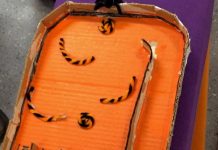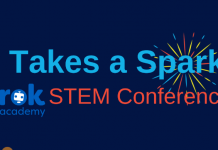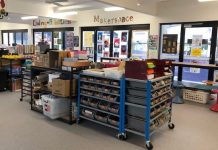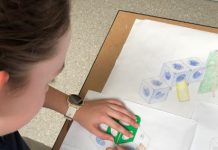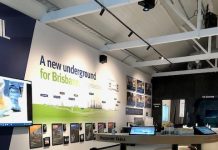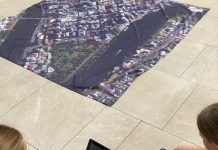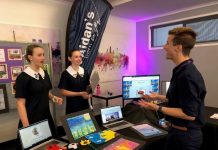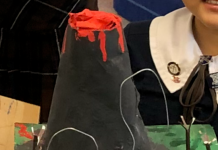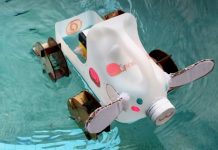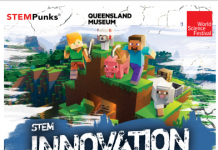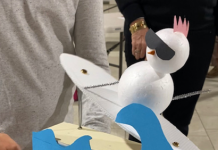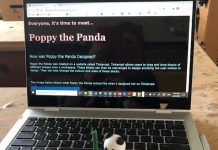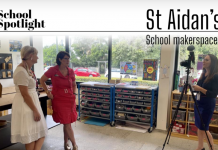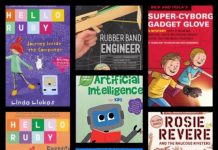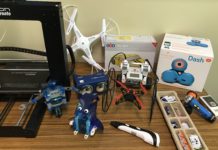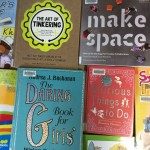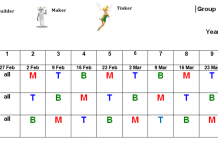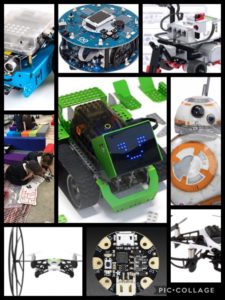 Final post on selecting and incorporating robots in activities to engage students in learning to code. Followed by a list of resources to support learning with robots and fun activity ideas.
Final post on selecting and incorporating robots in activities to engage students in learning to code. Followed by a list of resources to support learning with robots and fun activity ideas.
Learning is best when it is active, self-directed, authentic, interest driven and immediate. As part of the digital technologies curriculum students are presented with the opportunity to learn to write code and program which will enable them to become creators of technology not just consumers of technology.
Robotics provides students with hands-on opportunities to write code and see immediately the outcome. It provides a context for inquiry and discovery, to become active problem solvers and to engage in their own learning. If students are given the time, space and purpose to tinker with robots and solve open ended problems, it will allow for thought and action to come together, and the opportunity for students to construct knowledge and build theories in individual and collaborative settings. These are critical practices for learning and discovery that have application across all curriculum areas.
An important reason for robotics to be integrated into learning environments is that it is fun!
Computer programming can be quite an abstract concept and can be difficult to grasp without the base knowledge of robotics and coding. By beginning with robotics, students have a physical robot to experiment with. They can test out what works, and what doesn’t and have a better understanding of the importance of precise instructions.
The following digital technologies curriculum descriptors are addressed when students play, discover, experiment, create, build and program robots:
Implement digital solutions as simple visual programs involving branching, iteration (repetition), and user input
Design, modify and follow simple algorithms involving sequences of steps, branching, and iteration (repetition)
Design algorithms represented diagrammatically and in English, and trace algorithms to predict output for a given input and to identify errors
Implement and modify programs with user interfaces involving branching, iteration and functions in a general-purpose programming language
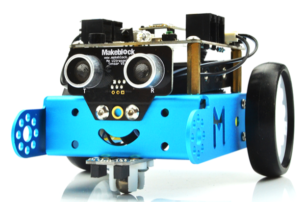 mBot
mBot
This build it yourself robot has 40 pieces to assemble by following instructions. I have not used it but a colleague has spoken positively about it. It can be programmed using MakeBlock’s programming APP available on both smartphones and tablets or on a computer where students quickly learn programming through mBlock, a software based on Scratch 2.0 and can turn the block like codes into C language. mBot also supports APP Inventor, which allows children to control their mBot with their self-created Android APPs.
http://store.makeblock.com/product/mbot-robot-kit
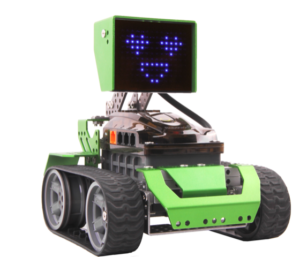 Qoopers
Qoopers
Robobloq have two robots which would appeal to students of this age. Qoopers and Q-scout are Programmable Metal Robots with metal bodies which are transformable. Students can use Robobloq drag-and-drop programming. The building process is manageable and the use of aluminium delivers a true feel of robots. Curriculum and project ideas are available as downloads from the website. This robot is very similar to mBot.
 Sphero
Sphero
Sphero is a programmable robotic ball, designed to teach students different aspects of programming and robotics. The ball can change colour, rolling speed and direction and can be controlled via downloadable tablet apps.
The Sphero web site contains videos, teaching materials and an online community for students and teachers to share their projects and ideas. The Sphero ball can be controlled by four different apps of differing complexity, allowing for increasingly sophisticated levels of coding including detecting events, conditional statements and iteration.
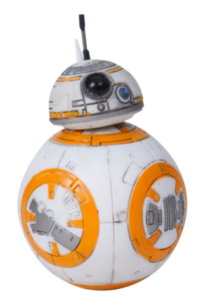 My favourite Sphero has to be BB-8. Students enjoyed programming BB-8 to complete missions around the library including admiring itself in a mirror and nodding!
My favourite Sphero has to be BB-8. Students enjoyed programming BB-8 to complete missions around the library including admiring itself in a mirror and nodding!
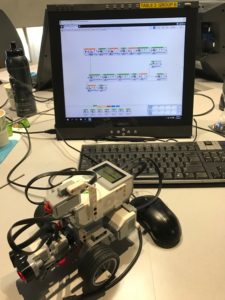 Mindstorm EV3
Mindstorm EV3
Both Mindstorms EV3 and NXT are excellent robotics to work with this age group. LEGO Education EV3 robotics is the third generation of LEGO Educational robotics and has an intelligent brick, motors, sensors and software to teach students how to program, build and test their models. LEGO education site has plenty of downloads to guide, give ideas and teach. There are quite a few competitions and challenges which students can take part in extending their interest in robotics. I have written about First Lego League Competition which my students have participated in here and here.
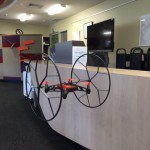 Drones
Drones
Drones are great for engaging students in learning to write code. My students started with Parrot Rolling Spider, an ultra-compact drone which can be controlled by a smartphone or iPad. It flies indoors and outdoors with surprising speed and stability. The girls thoroughly enjoyed writing code for acrobatic tricks. The free app for Minidrones FreeFlight 3 was also a fun way to start. The Rolling Spider is ultra-light and performs half- and u-turns, front and rear loops and with its removable wheels, it runs from floor to ceiling and walls. We did use Tickle app but now use Tynker to write code.
After attending a training session with SheFlies and working with the Parrot Mambo range, I have purchased the Flying Futures Pack. Mambos are easy to fly for all ages with stabilised flight and an easy to navigate app. They can be flown with an Android or iOS devices and can be easily coded using Tynker block coding. They have an integrated camera on the bottom of the drone that can be used for a range of curriculum outcomes. There are three types of Parrot Mambo’s. The drone is the same, it is just the accessories that change.
Arduino Robot
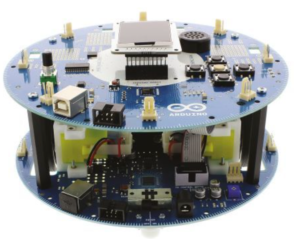 The Arduino robot is an Arduino on wheels. Students who enjoy working with Arduino would enjoy the challenges presented with this robot. The robot has two processors, one on each of its two boards. The Motor Board controls the motors, and the Control Board reads sensors and decides how to operate. Each of the boards is a full Arduino board programmable using the Arduino IDE.
The Arduino robot is an Arduino on wheels. Students who enjoy working with Arduino would enjoy the challenges presented with this robot. The robot has two processors, one on each of its two boards. The Motor Board controls the motors, and the Control Board reads sensors and decides how to operate. Each of the boards is a full Arduino board programmable using the Arduino IDE.
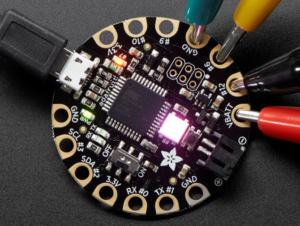 Wearable Robotics
Wearable Robotics
Although not a robot my girls thoroughly enjoy making accessories like bracelets, necklaces and bookmarks which can be coded to light up! Using LilyPads, Flora and Gemma boards students can learn electronics as well as writing code.
Resources to support Robotics with students.
Of course there are so many more great sites to view and get ideas from….Pinterest is fabulous too 🙂
I hope you have found something of interest in this post. Thank you for reading.

